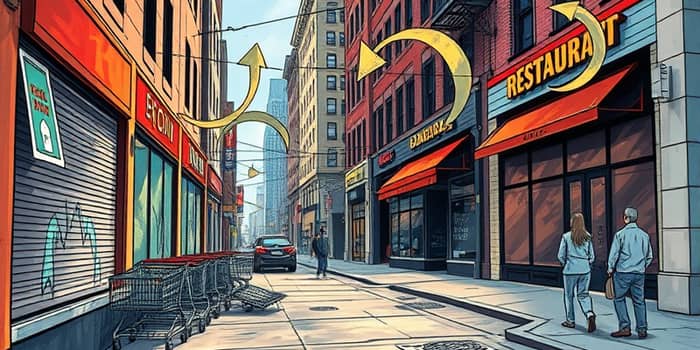
Bankruptcy filings across the United States have shown a marked increase over the past year, particularly in the retail and hospitality industries. For the twelve months ending March 31, 2025, total filings surged to 529,080 cases—a 13.1% year-over-year rise—up from 467,774 the previous year. Business bankruptcies climbed 14.7% to 23,309 cases, reflecting a continued, broad-based acceleration since 2022.
The volume of filings is part of an ongoing trend. Between March 2023 and March 2024, overall bankruptcies rose 16%, and preliminary data for April 2025 show filings up 9% year-over-year. While today’s numbers still fall short of the post-2008 financial crisis peak—when annual filings neared 1.6 million—the current climb highlights growing stress on many businesses.
The retail industry is bearing the brunt of these financial pressures. Estimates suggest that 15,000 physical retail stores in the US will close in 2025—more than double the 7,325 closures recorded in 2024, and exceeding the record set in 2020. Major chains like Joann Fabrics, Macy’s, Party City, Rue 21, and 99 Cents Only Stores have all announced significant closures or bankruptcy filings this year.
Experts point to four primary factors driving the so-called retail apocalypse is accelerating:
To survive, many retailers are embracing omnichannel strategies integrating online and offline experiences. Brands that fail to adapt digital infrastructure or reimagine in-store engagement face the greatest bankruptcy risk. Analysts warn that the second half of 2025 could see further consolidation as small chains merge or exit, leaving widespread vacancies in retail real estate.
The hospitality and restaurant sectors are also reeling. Services accounted for 28% of all large corporate bankruptcies in the first half of 2024, with restaurant filings peaking at their highest levels since 2020. Pandemic-era debts and government loans are now maturing, while profit margins remain razor-thin.
Hospitality businesses continue to confront a mix of challenges:
Industry veterans emphasize that cost control and service differentiation are now critical. Failure to innovate menus, loyalty programs, or ambiance could push more operators into insolvency.
Several macroeconomic and structural factors underpin the rising bankruptcy trend across both sectors:
New tariffs and import costs may further strain retail supply chains, raising prices and deterring shoppers. Meanwhile, hospitality businesses face unpredictable consumer habits shaped by remote work and digital engagement.
The ripple effects of these bankruptcies extend beyond individual companies. Commercial real estate markets face rising vacancies, impacting landlords and local tax revenues. Creditors and suppliers may confront payment shortfalls, necessitating legal restructuring or asset sales.
Looking ahead, the fate of retail lies in creative reinvention of the in-store experience and responsiveness to digital-first consumers. Hospitality leaders must balance cost efficiency with elevated guest experiences, leveraging technology where possible.
Most analysts do not expect a reversal of the trend soon. Continued economic uncertainty, evolving consumer preferences, and structural debt burdens suggest bankruptcy filings will remain elevated into late 2025. Yet, businesses that adapt strategically—embracing omnichannel models, optimizing cost structures, and fostering customer loyalty—stand the best chance of weathering this storm.
References













